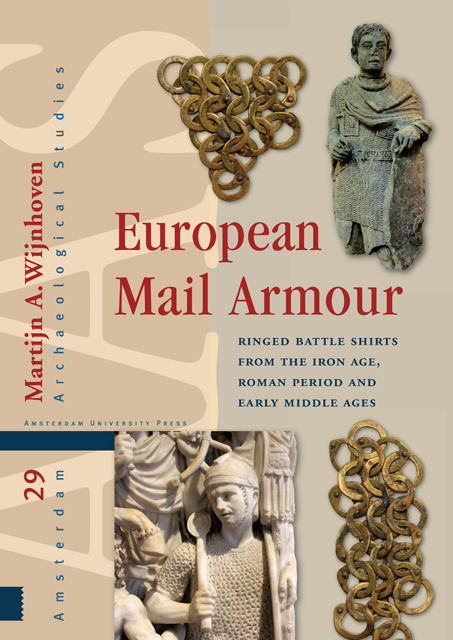Book contents
- Frontmatter
- Contents
- Acknowledgements
- Dedication
- 1 Introduction
- 2 The origins of mail armour
- 3 Distribution and archaeological context
- 4 The iconography of early mail armour
- 5 The naming of mail armour
- 6 Decoration in mail garments
- 7 Padded garments
- 8 The craft of making mail rings
- 9 Weaving patterns
- 10 The construction of mail garments
- 11 Ring characteristics
- 12 Final considerations
- Bibliography
- Database
- Appendix 1 Catalogue of mail armour
- Appendix 2 Catalogue of hybrid armour
- Appendix 3 Catalogue of isolated finds of fasteners and fixtures
- Appendix 4 Finds excluded from the database
3 - Distribution and archaeological context
Published online by Cambridge University Press: 24 November 2022
- Frontmatter
- Contents
- Acknowledgements
- Dedication
- 1 Introduction
- 2 The origins of mail armour
- 3 Distribution and archaeological context
- 4 The iconography of early mail armour
- 5 The naming of mail armour
- 6 Decoration in mail garments
- 7 Padded garments
- 8 The craft of making mail rings
- 9 Weaving patterns
- 10 The construction of mail garments
- 11 Ring characteristics
- 12 Final considerations
- Bibliography
- Database
- Appendix 1 Catalogue of mail armour
- Appendix 2 Catalogue of hybrid armour
- Appendix 3 Catalogue of isolated finds of fasteners and fixtures
- Appendix 4 Finds excluded from the database
Summary
It ought to be simple enough: artefacts survive in the archaeological record, they are re-covered in some way, and then we study them. Unfortunately, nothing is ever that simple.’
Mike C. Bishop & Jon C.N. Coulston
The archaeological record is an important source for making sense of the past, but like all sources, it cannot be taken at face value. To properly interpret archaeological data, we need to understand the depositional and taphonomic processes that form the record and make the presence of some objects more apparent than others. A basic model of the use life and deposition of an artefact is visualised in figure 3.1. First, the artefact is made, then it is used or consumed, and finally it is discarded or deposited in the ground where it may be preserved, and finally retrieved as an archaeological artefact in the present.
There are three phases that summarize the cycle from production to archaeological retrieval of mail armour. The first starts with the manufacturing process, followed by circulation and use. During its active use life, mail could be passed on from owner to owner, which could have occurred through several channels, such as inheritance, trade, exchange, or war booty, to mention a few. For the Roman army there is also the practice of selling military equipment back to the army. As many objects, mail would have been repaired when damaged and recycled.
The second phase concerns the deposition. The processes involved in this phase can be inferred using the archaeological context as the main anchoring point. In broad terms, the following general depositional contexts are defined in this study:
• settlement (civilian, military)
• funerary
• sanctuary
• aquatic context (river, lake, bog)
• countryside
These categories are to a certain extent arbitrary and not mutually exclusive, meaning that there can be an overlap. For example, a grave can also be located inside a settlement. In this chapter, contexts have been classified according to the highest level of specification.
The third phase in the mail cycle involves post-depositional processes. The archaeological detection of objects will depend on their preservation, which hinges on factors like the environment, the raw material of the artefacts, and their accessibility to researchers. Likewise, the local regulations (if and how archaeological research is carried out) can greatly affect awareness about the artefacts. The sum of all these processes defines the actual pattern of the archaeological distribution of mail armour.
- Type
- Chapter
- Information
- European Mail ArmourRinged Battle Shirts from the Iron Age, Roman Period and Early Middle Ages, pp. 35 - 84Publisher: Amsterdam University PressPrint publication year: 2021



